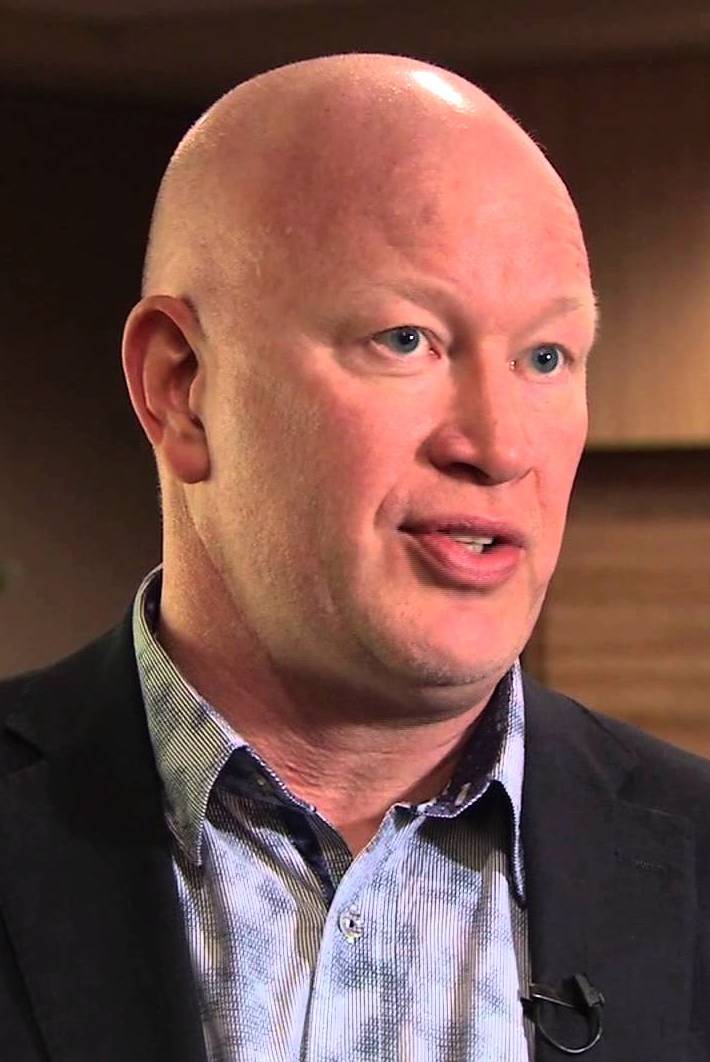Rick Trimp, who most recently was Alberta Health Services’ vice-president of province-wide clinical supports, programs and services and before that was briefly the organization’s interim co-CEO, doesn’t work for the massive provincial health services agency any more.
That much we know. Everything else is murky.
Trimp became interim co-CEO responsible for population, health and province-wide services when the previous CEO, Duncan Campbell, was replaced a year ago after only a month on the job. Campbell had Tweeted that a halt was being called to plans for a privatized medical super-lab in the Edmonton area. Days later, then health minister Fred Horne countermanded that statement and told Albertans nothing had changed about the super-lab plan. Campbell was sent back to his previous job as chief financial officer.
As interim co-CEO responsible for population, health and province-wide services, Trimp was the public face of the process announced Dec. 11, 2013, to choose the public-private partnership to build the consolidated Edmonton lab testing centre, a process worth $3 billion to the winner.
So Trimp obviously played a central role in the controversial decision announced last month to name Sonic Healthcare Ltd., a $6.7-billion Australian company, to run the massive privatized Edmonton-region lab services program for AHS.
Trimp’s departure was announced about two weeks later in a terse Halloween memorandum emailed to AHS “senior leaders,” which is what the organization calls its top executives nowadays.
Sent on behalf of AHS’s latest CEO, Vickie Kaminski, appointed last May 26, the email said little more than “I wish to announce that Rick Trimp will be leaving Alberta Health Services from his roles as Vice-President, Province-Wide Clinical Supports, Programs and Services, effective October 31, 2014.” That is to say, the same day as the memo was emailed.
It went on: “On behalf of AHS, I would like to thank Rick for all his contributions to AHS and wish him all the best in his future endeavours.” It then provided a list of eight senior execs who would fulfill his various duties until a replacement is named and advised leaders with questions to call Kaminski.
As far as I can tell, Trimp’s sudden departure was reported only by CBC Edmonton radio and TV news, which chose not to leave a permanent story on the network’s website.
On the face of it, little of this saga makes much sense.
Commentator Susan Wright argued in her excellent Susan on the Soapbox blog Nov. 9 that the decision to choose a foreign company for the huge project borders on “lunacy.” It will benefit Australian not Canadian tax authorities, the foreign company will far higher interest carrying costs than the Alberta government would have, and Sonic pays its executives huge amounts that will require topping up by Alberta taxpayers, argued Wright, who was the Liberal candidate in the Oct. 27 Calgary-Elbow by-election.
Accordingly, Wright asked: “Why does Stephen Mandel, the newly minted Minister of Health, think it’s a good idea for Alberta taxpayers to support the lifestyles of wealthy Australian businessmen who earn more than $13 million a year, their executive teams who get ridiculous bonuses and stock options and the Australian economy as a whole with corporate tax contributions?”
Good question, for which no answers are likely to be forthcoming.
Also lunacy, it is said here, was the decision a year earlier to use a P3 to build the lab, which is bound to cost taxpayers more and do a worse job than if the public sector had been left to do the job properly. This may have been why Campbell Tweeted that the project would be reconsidered, until Horne set him straight on that.
DynaLife Dx of Edmonton, the company that now provides many privatized lab services in Edmonton for AHS and which presumably thought it was a deadbolt cinch for the new, bigger contract, announced on Nov. 6 it would appeal the choice of Sonic.
It wasn’t clear from DynaLife’s news release if it meant a legal appeal or some kind of administrative procedure. No one at DynaLife was answering calls from bloggers that day, and the distinction didn’t seem to matter to the media.
“There were significant flaws and failures in the conduct of the RFP process which drove to a biased conclusion,” DynaLife CEO Jason Pincock said in the news release published by the Canadian company.
Among those failures, the release said, was the fact “AHS did not include or evaluate the significant risks or costs of transition in its RFP process.” And AHS can’t assume DynaLife will just hand over its lab-testing infrastructure to Sonic, Pincock told local journalists.
The same day, AHS responded with a statement of its own: “We are confident the RFP process was conducted in a fair and transparent manner with all proponents being treated equally, and that the robust RFP evaluation and selection process has resulted in the selection of the best quality laboratory service solution for Albertans.”
Well, the process may or may not have been transparent to the companies involved, but like most everything where privatization and P3 schemes are involved, there’s absolutely nothing transparent about the process to the people who pay the bills and require the services — that is to say, us Albertans.
Similarly opaque is the reason for or meaning of the swift departure of a senior executive who played a key role in the selection process so soon after the choice was announced.
So pardon my French, but what l’enfer is going on? Mr. Mandel?
This post also appears on David Climenhaga’s blog, Alberta Diary.



